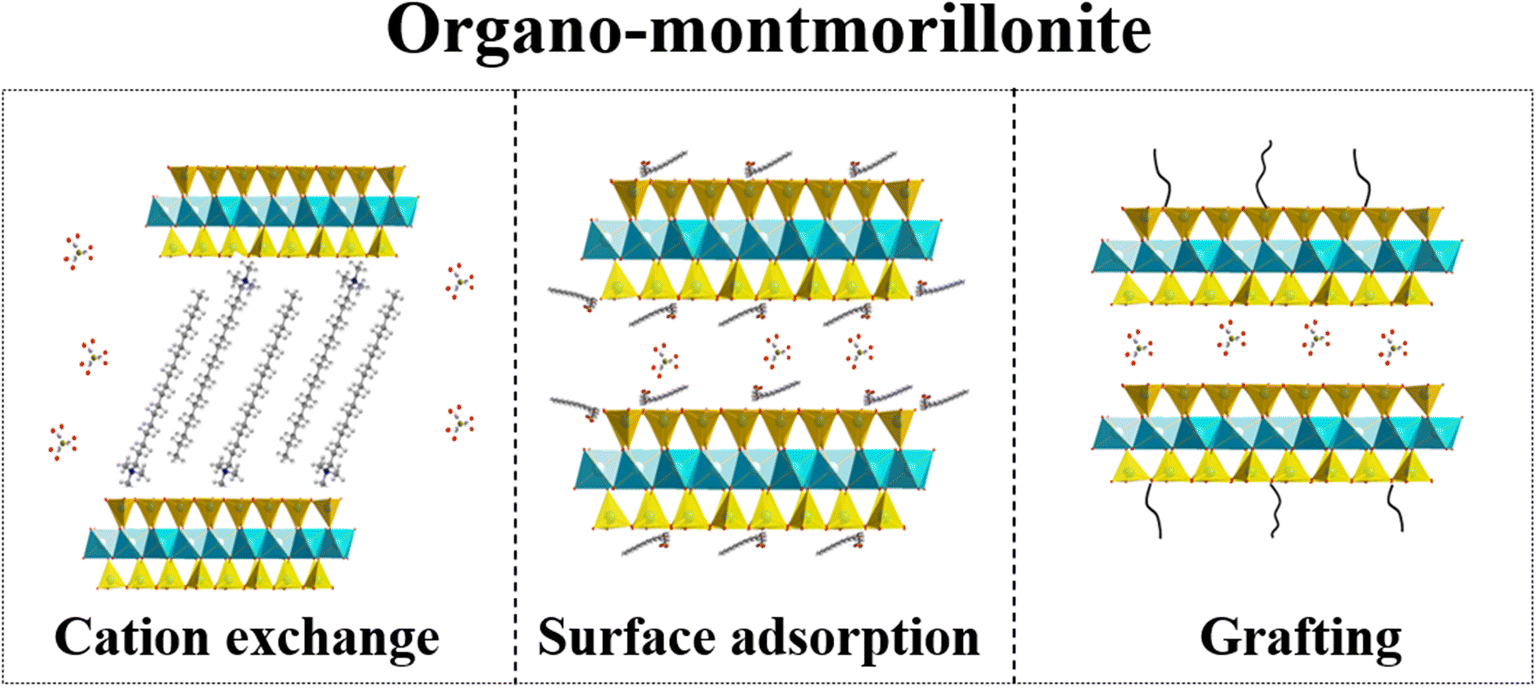Modification of the surfaces of montmorillonite (Mnt) by organic molecules is an effective method for improving their affinity toward non-aqueous substances, and has resulted in extensive industrial applications as rheological control agents, drilling fluids, and other functional materials used in applications ranging from environmental remediation to coatings. The present study reviewed recent progress in organo-modification of Mnt, and provides state-of-the-art insights into proposed modification mechanisms and the peculiar functionalities of the resulting organo-montmorillonite (OMnt). Several routes have been employed to modify Mnt, including ion exchange with organic ions, surface adsorption, and grafting of organics. Commonly used organic modifiers include cationic, anionic, zwitterionic, non-ionic, and polymeric species. Organo-modification is driven by multiple interactions: van der Waals forces, cation exchange, electrostatic interaction, hydrogen bonds, and ion–dipole interaction. OMnt, in general, exhibits synergistic and/or antagonistic effects when used in oil-based drilling fluids, environmental remediation, or layered silicate/polymer nanocomposites. The detailed mechanisms of non-ionic and zwitterionic modification of Mnt remain unclear. This literature survey suggests that future work should emphasize deeper understanding of interactions between the Mnt and the organic modifiers, and meanwhile expand the applications of OMnt into catalysis, drug carriers, and the biomedical field.
Graphical abstract


